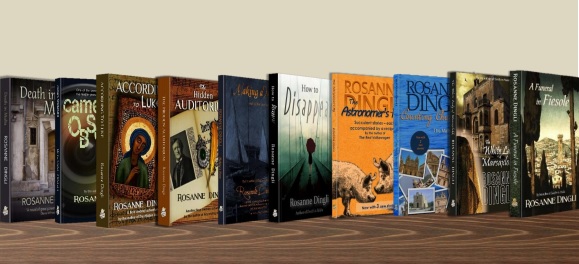 Image via Wikipedia
Image via WikipediaThe following is a reproduction of the blog on my website. You might prefer to visit this place to view and respond.
If you liked the Da Vinci Code, you must have an idea what attracted you to that kind of thriller. Was it the breathless chase? Was it the mention of well-known pieces of art? Or was it the locations, described in a way that made you feel you were there... and made you recognise them when you actually went?
Different readers like that kind of book for different reasons. Some are disappointed with the writing, but persist because the story is such a good one. Some keep reading because - although the characters are a bit unrealistic - they find enough that is entertaining and thrilling. Some are absolutely fascinated by the conspiracies and historical threads that lead into the present. Many find the political detail overwhelming, or the historical facts boring, but like the concept of the modern discovery of old mysteries.
How much of it is true, we ask ourselves? Writers in this genre often weave in a lot that is authentic, genuine and verifiable, which makes us wonder about the rest. If there is really a chapel at Roslyn in Scotland, and it is really full of mysterious carvings, then the rest of the story seems plausible. If there are other books about the Merovingian line, and a lot of the material in the thriller can be looked up, then perhaps there is some foundation to its premise.
Dan Brown used a lot of material that can be looked up, and there are other fiction writers like him. I am such a one: I find a premise that could conceivably happen, if the circumstances are right. I use props that exist in the real world: these can be paintings, music, food, artfacts and tools. I also use medical conditions, procedures and scientific tests that also exist in the world outside my books. It can all be researched and verified, which is great fun.
The story feels all the more realistic and plausible if it is built on these kinds of verifiable blocks. Adding a story that is intricate and woven in and out of these real and true aspects is very difficult but also great fun.
According to Luke is such a story. I have used a perfectly feasible premise and found locations, tools, artefacts and pieces of art that exist and used them together in an inextricable weave. The resulting story may seem controversial to some, astounding to others... and merely a good story to the rest.
Whichever kind of reader you are, According to Luke should supplement your reading matter if you already like the genre, or lead you onward to discovering other writers who create this kind of story. It is a controversial book similar to others in its genre.For more on this subject, see my blog about controversial books.
Happy reading!




Well you've captured my interest! I'm going to have to check out According to Luke. Sounds captivating!
ReplyDelete